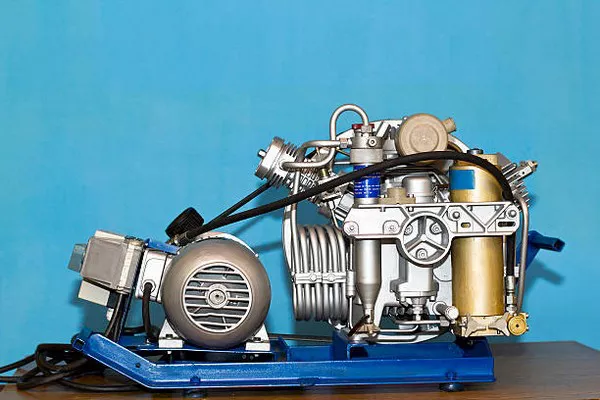Refrigeration is a vital aspect of modern life, utilized in everything from preserving food to climate control in buildings and transportation. At the heart of every refrigeration system lies a crucial component: the refrigerant. These gases play a pivotal role in the cooling process, allowing refrigeration systems to function efficiently. However, not all refrigerants are created equal, and the choice of refrigerant can have significant implications for environmental sustainability, energy efficiency, and safety. In this article, we will explore the various types of gases used for refrigeration, their properties, applications, and the ongoing shift towards environmentally-friendly alternatives.
Understanding Refrigerants:
Refrigerants are substances that undergo a phase change from a liquid to a gas and back again in a refrigeration cycle. This cycle allows them to absorb heat from a low-temperature environment and release it in a higher-temperature environment, thereby cooling the desired space. The ideal refrigerant should possess several key properties, including high thermal conductivity, low boiling point, chemical stability, and non-toxicity.
Historically, chlorofluorocarbons (CFCs) and hydrochlorofluorocarbons (HCFCs) were commonly used as refrigerants due to their desirable properties. However, these substances have been largely phased out due to their detrimental effects on the ozone layer and contribution to global warming. In their place, hydrofluorocarbons (HFCs) gained popularity as a transitional solution. While HFCs do not deplete the ozone layer, they have a high global warming potential (GWP), leading to concerns about their environmental impact.
Types of Refrigerants:
Hydrochlorofluorocarbons (HCFCs):
HCFCs, such as R22, were once widely used in refrigeration and air conditioning systems. However, their ozone-depleting properties led to the implementation of strict regulations to phase out their production and use. As a result, HCFCs are being gradually replaced by more environmentally-friendly alternatives.
Hydrofluorocarbons (HFCs):
HFCs emerged as substitutes for ozone-depleting refrigerants, offering similar performance without harming the ozone layer. Common HFC refrigerants include R134a and R410a, which are prevalent in residential and commercial air conditioning systems. While HFCs do not pose a direct threat to the ozone layer, they have high GWPs, contributing to climate change.
Hydrocarbons (HCs):
Hydrocarbons, such as propane (R290) and isobutane (R600a), are natural refrigerants derived from petroleum. They have gained popularity due to their low environmental impact, with zero ozone depletion potential (ODP) and negligible GWP. HCs are highly energy-efficient and compatible with existing refrigeration systems, making them an attractive option for eco-conscious consumers and businesses.
Ammonia (NH3):
Ammonia is one of the oldest refrigerants and remains widely used in industrial refrigeration applications, such as cold storage warehouses and food processing facilities. It has excellent thermodynamic properties, high energy efficiency, and zero GWP. However, ammonia is toxic and flammable, requiring careful handling and safety precautions.
Carbon Dioxide (CO2):
Carbon dioxide, or CO2, has gained attention as a natural refrigerant with minimal environmental impact. Also known as R744, CO2 is non-toxic, non-flammable, and has zero ODP and a low GWP. It is primarily used in commercial refrigeration systems and automotive air conditioning units. CO2 systems operate at higher pressures than traditional refrigerants, requiring specialized equipment and components.
Hydrofluoroolefins (HFOs):
HFOs are a new generation of refrigerants developed as alternatives to HFCs, offering lower GWPs and improved environmental performance. Examples include R1234yf and R1234ze, which are being adopted in automotive air conditioning and refrigeration applications. HFOs are designed to minimize environmental impact while maintaining efficient cooling performance.
Environmental Considerations:
The environmental impact of refrigerants is a significant concern, given their role in climate change and ozone depletion. Regulatory agencies, such as the Environmental Protection Agency (EPA) in the United States and the European Union’s F-Gas Regulation, have implemented measures to phase out high-GWP refrigerants and promote the adoption of environmentally-friendly alternatives.
The Montreal Protocol, an international treaty aimed at protecting the ozone layer, has been instrumental in reducing the production and consumption of ozone-depleting substances, including CFCs and HCFCs. As a result, the refrigeration industry has shifted towards low-GWP alternatives, such as HFCs, HCs, CO2, and HFOs, to mitigate their environmental impact.
Future Trends:
The refrigeration industry is undergoing a paradigm shift towards sustainable and energy-efficient solutions. This includes the development and adoption of natural refrigerants, improved system designs, and enhanced energy management practices. Advances in technology, such as magnetic refrigeration and thermoelectric cooling, offer promising alternatives to traditional vapor compression systems, further reducing energy consumption and environmental impact.
See Also What Is The Basic Principle Of Refrigeration
Conclusion:
Refrigerants play a critical role in modern refrigeration systems, enabling the cooling of various applications from food preservation to climate control. The choice of refrigerant has significant implications for environmental sustainability, energy efficiency, and safety. As the refrigeration industry continues to evolve, there is a growing emphasis on adopting environmentally-friendly alternatives that minimize ozone depletion and mitigate climate change. By embracing natural refrigerants, improving system efficiency, and implementing stringent regulations, we can create a more sustainable future for refrigeration.

